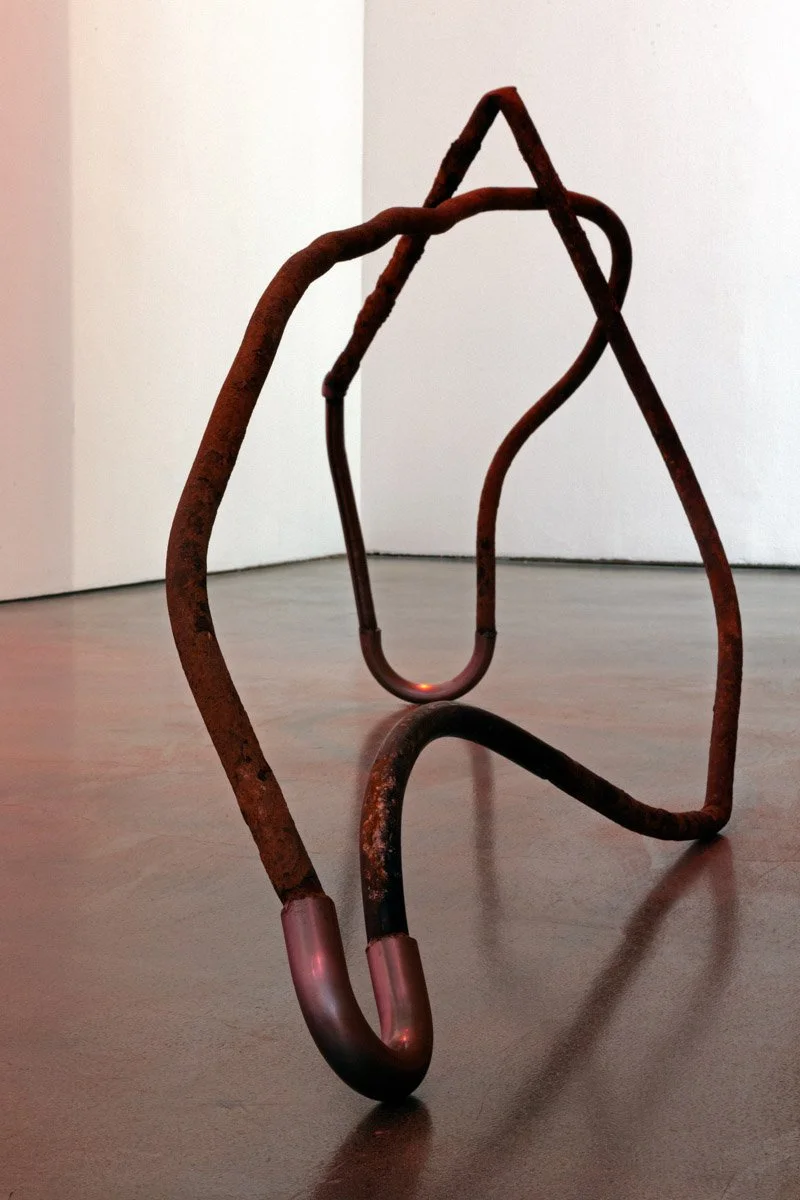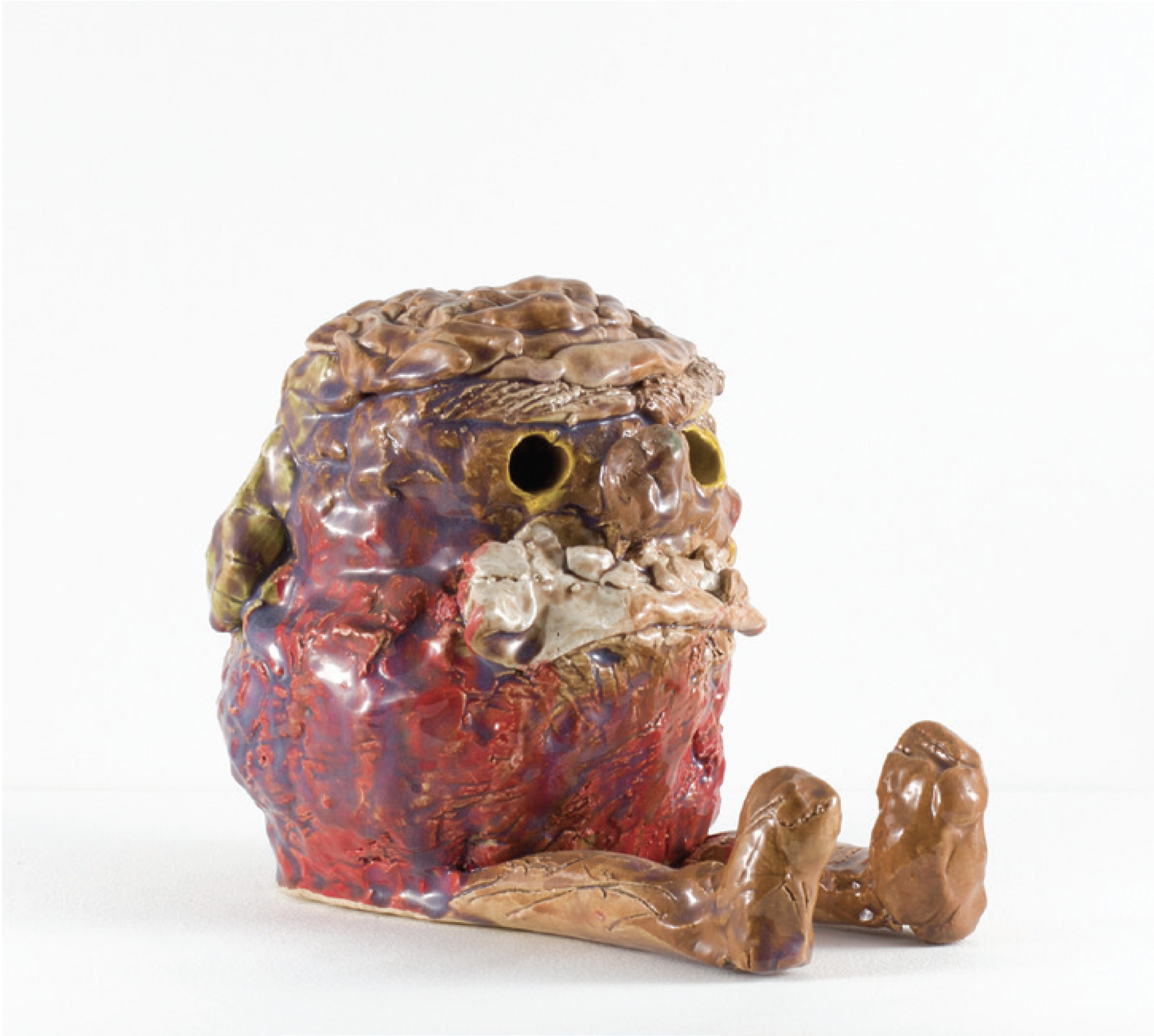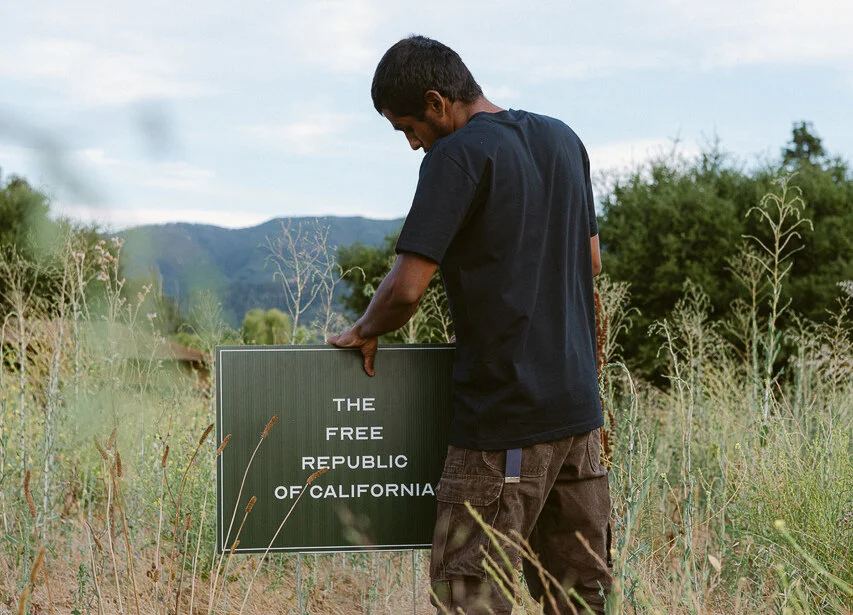In Conversation: Rosha Yaghmai
Southern California sculptor Rosha Yaghmai’s striking blend of industrial and handmade materials is featured in two regional exhibitions this year: Drifters at the Museum of Contemporary Art Santa Barbara (October 2021 – January 2022) and Rosha Yaghmai: In Residence at the Carolyn Glasoe Bailey Foundation, Ojai (March 12 – May 7, 2022).
Yaghmai, whose father immigrated to California from Tehran, Iran, brings the legacy of a deep and elusive personal history to her immersive installations. Viewers walk among earthly registers, architectural structures and radiant abstractions, experiencing the force of hidden waves of memory, history and the psychedelic.
Rosha Yaghmai, Drifters, 2021, Installation view, Courtesy the Artist and MCASB, photo by Monica Nouwens
Rosha Yaghmai: I live and make work in Los Angeles where I grew up. I moved to New York for several years to go to SVA (School of Visual Arts) and came back to LA to go to CalArts for grad school. It had always been a dream of mine to go to CalArts. I studied with Martin Kersels, Leslie Dick and Michael Asher – all of whom were incredibly influential for me.
Possibly even more eye opening were my years working for Martin (Kersels), Mike Kelley and Paul McCarthy after grad school. I didn’t grow up around artists and that world; I had never had any models of what that life would look like. It was incredible to see how others found their way and the ways in which art and “life” were inextricable. I also learned a lot about making sculpture.
Debra Herrick: Your recent exhibition, Drifters, at Museum of Contemporary Art Santa Barbara (October 2021 – January 2022) has elements of the transcendental, such as the luminous organza and resin “afterimages,” alongside artifacts of earthly creation, ie. the boulders and pipes. This reflects the breadth of materials that you utilize in your practice to achieve an immersive installation. The curved wall that divides the space and the color lighting were also definitive architectural elements to the experience.
Tell me about your immersive installations and what you are seeking as you move from concept to execution of the work.
Rosha Yaghmai, Drifters, 2021, Installation view, Courtesy the Artist and MCASB, photo by Monica Nouwens
I think of my shows as sort of collections of works, usually sculptures, that are arranged in a “scene” or Surrealist tableau. There are connections I’m making between the objects, but the objects are not contingent upon each other. They are coming together for a brief time to evoke a certain feeling or mood – one that hopefully draws the viewer into the psychology of each work individually while they are ensnared in the overall emotional aura.
I will often combine unrelated materials and objects. The organza works are elusive/ illusory, ever shifting as your body moves through the space. They are hard to focus on and imply an unseen depth. The pipes also act as a stand-in for something unseen – an absent, fragmented and reconfigured (inner) architecture. The rocks provide real weight and density, a “real” landscape. The curved wall maps an “inner” and “outer” space.
Why do you think you’re drawn to elements of the unseen and elusive? Are there any philosophical or theoretical lines that you are thinking about while approaching your work?
Making work has always been a way for me to place myself in the world, to understand my position and to encourage my personal unconscious to come forward and see how it relates to the collective unconscious I have inherited.
Rosha Yaghmai, Afterimages, Drifters, 2021, Installation view, Courtesy the Artist and MCASB, photo by Monica Nouwens
I’m intrigued by your use of personal history in your work which is both potent and elusive at the same time. In the series, Afterimages, material from Shahnameh: The Book of Kings references your Persian ancestry. At the same time, your approach to this imagery is to remove all human narrative, photoshopping away battles, castles, historical figures and so on. What the viewer ultimately sees is a pared down space created from layers of organza embedded in resin. Psychology is a part of your work, I believe, and you also haven’t shied away from saying that your work has psychedelic elements. I’m curious to know more about how your personal history, as well as knowledge of the metaphysical and/or psychological aspect of art, intersect with your practice.
For me, all my work is personal. In the Afterimage works, I am using the ancient Persian imagery to highlight my distorted relationship to that cultural history (passed down mythology, values, etc.). To play with the imagery is for me to examine what emerges.
Almost like a scientific slide sample, I lay out the material, zoom in, enhance, eliminate, zoom in further, and see what reveals itself. Often the final works will appear as if they are from the inner body, veins, etc., and others appear as disappearing landscapes.
I often think about occupying other bodies and times. That’s where the psychedelic comes in; it’s about this potential, this desire. These works are my attempt to place my unknown histories back in my body. To let them exist as a ghostlike veil over my vision, to allow this “afterimage” to exist simultaneously with my life.
Fascinating. The work is so personal and yet completely available and inviting to the viewer. How much do you think about the viewer when you’re working?
I do not think about the viewer when I am making the work. I try and focus on what I want and work on being free. But I do think about the viewer when installing a show. I am always conscious of the viewer’s movement through the space, and as I mentioned, setting the proper mood.
Your upcoming show at the Carolyn Glasoe Bailey Foundation will be a site responsive installation. What can you tell us about this exhibition?
I am so excited for my upcoming project at Carolyn Glasoe Bailey Foundation, and to work with Frederick Janka. The exhibition will be made up of new experimental sculptures that expand on a series of poured silicone screens I started in 2017. Working with the silicone as a kind of skin or membrane that is a thin distinction between inner and outer worlds, I am hoping to push the works to engage more directly with the body as an architecture, highlighting entangled systems and hidden structures.
This article was originally published in print in Lum Art Magazine 05.








